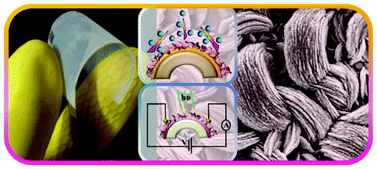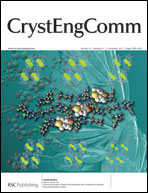Three dimensional ZnO nanostructures realized through a polymer mediated aqueous chemical route: candidate for transparent flexible electronics†
Abstract
A brand new three dimensional zinc oxide nanosheet array was developed through manipulating its crystal growth habits with the anionic polymer, polysodium 4-styrene sulfonate (PSS). Along with being low cost, the process separates itself from other nanosheet array production protocols not only in its unique hierarchical assembly but as it is also devoid of any post-growth high temperature pyrolysis thus offering the opportunity to integrate devices over temperature sensitive substrates. Efficient electron emissions with low operating fields (turn-on field 3.5 V μm−1) are registered from the transparent field emitter based on three dimensional nanosheet assemblies on polymeric substrates and it can preserve its high performance even in a bended state. UV photodetectors based on the same material exhibit photocurrent gains as high as 1.95 × 105 which is 42 times higher when compared to nanowires and this is attributable to the much higher surface area; even after 100 consecutive bending cycles the detector performance degradation is negligible. This study will motivate the development of new morphologies in chemical synthesis routes employing polymers as growth modifiers.


 Please wait while we load your content...
Please wait while we load your content...